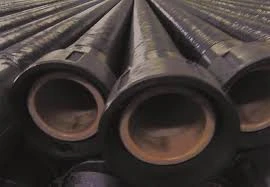
-
 Afrikaans
Afrikaans -
 Albanian
Albanian -
 Amharic
Amharic -
 Arabic
Arabic -
 Armenian
Armenian -
 Azerbaijani
Azerbaijani -
 Basque
Basque -
 Belarusian
Belarusian -
 Bengali
Bengali -
 Bosnian
Bosnian -
 Bulgarian
Bulgarian -
 Catalan
Catalan -
 Cebuano
Cebuano -
 China
China -
 China (Taiwan)
China (Taiwan) -
 Corsican
Corsican -
 Croatian
Croatian -
 Czech
Czech -
 Danish
Danish -
 Dutch
Dutch -
 English
English -
 Esperanto
Esperanto -
 Estonian
Estonian -
 Finnish
Finnish -
 French
French -
 Frisian
Frisian -
 Galician
Galician -
 Georgian
Georgian -
 German
German -
 Greek
Greek -
 Gujarati
Gujarati -
 Haitian Creole
Haitian Creole -
 hausa
hausa -
 hawaiian
hawaiian -
 Hebrew
Hebrew -
 Hindi
Hindi -
 Miao
Miao -
 Hungarian
Hungarian -
 Icelandic
Icelandic -
 igbo
igbo -
 Indonesian
Indonesian -
 irish
irish -
 Italian
Italian -
 Japanese
Japanese -
 Javanese
Javanese -
 Kannada
Kannada -
 kazakh
kazakh -
 Khmer
Khmer -
 Rwandese
Rwandese -
 Korean
Korean -
 Kurdish
Kurdish -
 Kyrgyz
Kyrgyz -
 Lao
Lao -
 Latin
Latin -
 Latvian
Latvian -
 Lithuanian
Lithuanian -
 Luxembourgish
Luxembourgish -
 Macedonian
Macedonian -
 Malgashi
Malgashi -
 Malay
Malay -
 Malayalam
Malayalam -
 Maltese
Maltese -
 Maori
Maori -
 Marathi
Marathi -
 Mongolian
Mongolian -
 Myanmar
Myanmar -
 Nepali
Nepali -
 Norwegian
Norwegian -
 Norwegian
Norwegian -
 Occitan
Occitan -
 Pashto
Pashto -
 Persian
Persian -
 Polish
Polish -
 Portuguese
Portuguese -
 Punjabi
Punjabi -
 Romanian
Romanian -
 Russian
Russian -
 Samoan
Samoan -
 Scottish Gaelic
Scottish Gaelic -
 Serbian
Serbian -
 Sesotho
Sesotho -
 Shona
Shona -
 Sindhi
Sindhi -
 Sinhala
Sinhala -
 Slovak
Slovak -
 Slovenian
Slovenian -
 Somali
Somali -
 Spanish
Spanish -
 Sundanese
Sundanese -
 Swahili
Swahili -
 Swedish
Swedish -
 Tagalog
Tagalog -
 Tajik
Tajik -
 Tamil
Tamil -
 Tatar
Tatar -
 Telugu
Telugu -
 Thai
Thai -
 Turkish
Turkish -
 Turkmen
Turkmen -
 Ukrainian
Ukrainian -
 Urdu
Urdu -
 Uighur
Uighur -
 Uzbek
Uzbek -
 Vietnamese
Vietnamese -
 Welsh
Welsh -
 Bantu
Bantu -
 Yiddish
Yiddish -
 Yoruba
Yoruba -
 Zulu
Zulu
frp dual layer composite product
Understanding FRP Dual Layer Composite Products
The relentless pursuit of innovation in materials science has led to the development of advanced composite materials. Among these, Fiber-Reinforced Polymer (FRP) dual-layer composite products have gained significant traction across various industries due to their unique properties and versatile applications.
What is FRP?
Fiber-Reinforced Polymer (FRP) is a composite material made of a polymer matrix reinforced with fibers, typically glass, carbon, or aramid. The main advantage of FRP is its exceptional strength-to-weight ratio, which allows for lightweight yet durable components that can withstand harsh environmental conditions. FRP materials are resistant to corrosion, making them suitable for applications in marine, construction, aerospace, and automotive industries.
The Concept of Dual Layer Composition
In the context of dual-layer composites, the core idea is to enhance the overall performance of the composite by utilizing two distinct layers. Each layer serves a specific purpose, combining their unique properties to achieve a greater overall performance than a single-layer counterpart.
1. Core Layer The inner or core layer is typically designed to provide good mechanical properties. This may involve the use of a high-strength polymer matrix that ensures substantial load-bearing capacity. Additionally, this layer might incorporate lightweight materials to maintain a low overall weight while minimizing bulk.
2. Outer Layer The outer layer usually focuses on environmental protection, shielding the inner core from external factors such as moisture, UV radiation, and extreme temperatures. This layer is often formulated with a high-performance resin that is durable, resistant to scratching, and can endure varying weather conditions.
Advantages of FRP Dual Layer Composite Products
The combination of dual-layer construction offers several advantages
- Enhanced Performance The synergy created by the combination of materials leads to improved mechanical properties
. The outer layer provides protection, while the inner layer delivers structural strength.frp dual layer composite product

- Weight Efficiency The use of advanced materials such as carbon fibers can result in significant weight savings compared to traditional materials like steel or aluminum. This is particularly advantageous in applications where weight is a critical factor, such as in aerospace or automotive sectors.
- Corrosion Resistance FRP composites are inherently resistant to a wide range of chemicals, including acids and alkalis. This characteristic extends the lifespan of the product, particularly in harsh environments, thus reducing maintenance and replacement costs over time.
- Design Flexibility The versatility of FRP materials allows for intricate designs that can be tailored to specific applications. Manufacturers can easily create complex shapes and configurations that are not feasible with traditional materials.
Applications of FRP Dual Layer Composites
Due to their remarkable properties, FRP dual-layer composite products are employed in various industries.
- Aerospace In aerospace engineering, the lightweight nature and high strength of FRP composites make them ideal for aircraft components, including wings, fuselage sections, and internal structures.
- Construction In the construction industry, these composites are utilized for bridge elements, beams, and reinforcements, as they can withstand extreme loads while being resistant to corrosion in marine or damp environments.
- Automotive The automotive sector benefits from the weight savings achieved through FRP composites, enhancing fuel efficiency without compromising safety. Components such as body panels and structural elements are increasingly being made from FRP.
- Renewable Energy Wind turbine blades are often constructed using FRP composites, as their light weight and high strength contribute significantly to the efficiency and durability of wind energy systems.
Conclusion
The development of FRP dual-layer composite products represents a significant advancement in material technology. By understanding the intrinsic properties of fiber-reinforced polymers and leveraging the benefits of dual-layer composition, industries can create products that not only meet specific performance requirements but also address environmental challenges. As research and innovation continue in this field, we can expect to see even more creative applications of FRP composites, contributing to a more sustainable and efficient future.









